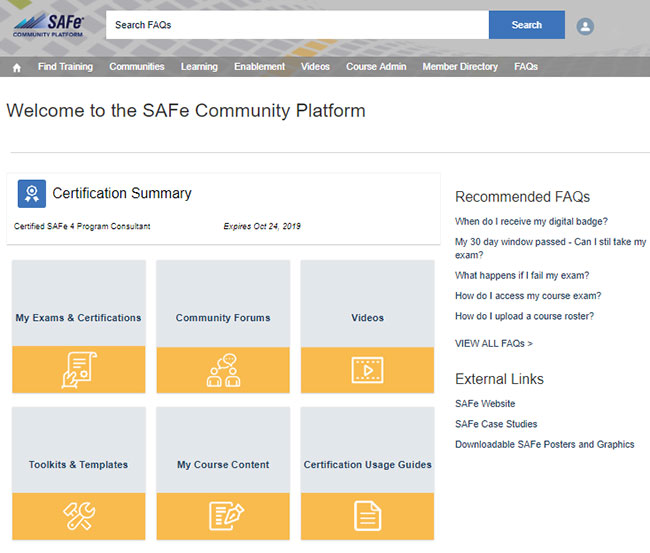The Scaled Agile Framework (SAFe) is a knowledge base of proven, integrated principles, practices, and competencies for Lean, Agile, and DevOps. Designed for organisations with multiple teams, it applies the power of Agile, along with the contemporary knowledge found in systems thinking and Lean product development, to help businesses address the challenges of developing and delivering enterprise-class software and systems in the shortest sustainable lead time.
I first encountered SAFe while working on a client site at the end of 2017. I witnessed firsthand the whole IT division, which consisted of 400+ people, undertake an Agile transformation using the SAFe framework.
What I like most about SAFe is that it incorporates built-in quality as a core value. I also like that its knowledge base is freely available online, containing proven success patterns for implementing Lean-Agile software and systems at enterprise scale.
When you first see SAFe, it can be a little overwhelming, but once you understand the different configurations, it‘s not too daunting.

Figure 1: Full SAFe configuration picture taken from Scaled Agile, Inc.
This image shows a full configuration of SAFe that includes the Portfolio, Large Solution, Program and Team levels. There are three other configurations that organisations can choose to implement, which are either Portfolio SAFe, Large Solution SAFe or Essential SAFe.
The client I was working with chose the Portfolio SAFe configuration. They implemented it well and, by all reports, are continuing to reap the rewards today.
In fact, they recently held a celebration to recognise the successful adoption of SAFe. They also commemorated a full year of conducting Planning Increment (PI) events, which are a core part of SAFe and one of the things that separate it from ‘traditional’ Agile.
This experience inspired me to learn more about SAFe so I could help organisations with a specific interest in SAFe, not just Agile. And today, as a certified SAFe Program Consultant (SPC), I am qualified to coach, train, and guide organisations to implement a Lean-Agile SAFe transformation.
Training SAFe courses
There are a number of training courses that help organisations implement SAFe effectively. All of the certification courses can be seen in the implementation roadmap (Figure 3) as blue and yellow circles.

Figure 2: Implementation Roadmap taken from Scaled Agile, Inc.
Since the start of the year, I have run a number of SAFe certification courses, which are also a lot of fun to run. One of the great things about the Leading SAFe and SAFe for Teams courses is that participants get to simulate a PI planning event.
For me, there is nothing better than seeing lots of interaction and discussions taking place from class participants. This picture below was taken during a Leading SAFe course I ran earlier this year.
SAFe community platform
Another great thing about SAFe courses is access to the SAFe community platform. On completion of your course attendance, you get access to the community platform that has a wealth of information, from finding community forums to providing you with toolkit to help implement SAFe.
It is also where you take the exam for the certification. It includes a mock exam that you can take as many times as you need before you feel ready to take the real thing. The SAFe community platform also provides results instantly for both the mock and real exams.

Figure 3: My SAFe community platform
Want to be SAFe?
My experience of SAFe so far has been very positive. I have enjoyed being part of an organisation implementing SAFe successfully. I have also learned lots of new skills as a SAFe Program Consultant, and I have certainly had a great time running the SAFe courses.
SAFe’s core value of built-in quality is a great match with Planit’s core value of building quality solutions, which we will continue to do for another 20 years.
If you are starting on your SAFe journey, or feel that you are not getting the value from implementing Agile that you thought, contact us today to find out how we can assist.